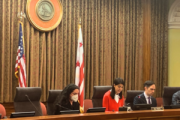Nicaragua offers one of the world’s largest lakes, pristine Caribbean beaches and islands, cool mountains and hundreds of miles of dramatically beautiful Pacific coastline. This country also boasts one of the world’s most affordable costs of living in retirement. A couple could retire comfortably here on as little as $1,200 per month.
It’s easy to establish retiree residency in Nicaragua, which has a low minimum income threshold. Regardless of what you may have heard or read, Nicaragua is a safe and welcoming place. Every time I visit, I look forward to getting there and I’m sorry to leave.
Nicaragua’s crown jewel is the Spanish-colonial city of Granada. Founded in 1524, Granada claims to be the first European city in mainland America. It was named after the ancient city of Granada, Spain, and shares some of that city’s Moorish architectural influences.
Granada sits at the north end of Lake Nicaragua with beaches within walking distance of town. Just offshore is a group of small private islands called Las Isletas, several of which are for sale.
Lake Nicaragua, with its beaches, fresh water and islands, provides a great recreational opportunity and a pleasant way to escape the heat. Its 3,100 square miles mean lots of options for boating and fishing.
Granada’s large resident expat community and active tourist trade mean this city has developed to include amenities that a city of 120,000 would not ordinarily have, including restaurants, bakeries, hotels and bed and breakfasts that distinguish Granada from most cities of its size.
Granada enjoys good connections to the U.S. from the nearby airport in Managua. The international airport at Managua is less than an hour to the north, and the Pacific Ocean lies just over an hour to the west.
Perhaps best of all, Granada feels authentically Nicaraguan. This city is home to one of the world’s biggest communities of foreign retirees, but it hasn’t lost its charm. Ox carts lumber through the streets alongside the towering cathedral, and local vendors offer traditional Nicaraguan delicacies, crafts and pottery in tables set up around the square. Granada offers a unique blend of native Nicaraguan city life and expat amenities.
Granada has one thing more that you’ll notice immediately upon arrival. This city is home to an impressive number of well restored and preserved Spanish-colonial structures, some private residences and others converted into shops, restaurants, hotels and museums.
Like all Spanish-colonial cities, Granada is built around a large, shady and bustling town square anchored by a neoclassical cathedral at one end. The narrow streets were built prior to the automobile and are lined with rows of cheerful Spanish-style homes.
Unlike in other Spanish-colonial cities, however, prices for Granada’s old haciendas remain reasonable, and are sometimes even a bargain. You can get in the door for less than $60,000, making Granada’s colonial houses the best value for the money of this architectural style available anywhere in the Americas. Even renovated properties are a bargain, but the best buys are the fixer-uppers. These are downright cheap, and renovation costs are very low.
If you’re not familiar with the architectural style, “Spanish colonial” refers to a type of city dwelling that’s plain on the outside with its rooms built around a central interior courtyard. It’s a style designed for an environment where the houses are built against one another with no room for outside yards. Hence the “yard” is inside the house, where it’s private, often lush and open to some of the home’s living areas.
The Spanish-colonial homes in Granada tend to be smaller than in many cities, and one-story houses are common. This makes the houses brighter, as the single story allows for more direct sunlight through the center courtyard. Many of Granada’s colonials have been renovated to include pools in their interior courtyards, something else not typical in other colonial markets.
On the market today in Granada is a three-bedroom fixer-upper in the historic center priced at just $59,000. This house needs a considerable amount of renovation. However, it’s in an ideal location, making it an excellent buy.
Another house on the market is located one block from Calle Calzada, with its restaurants, shops, bars and cafes. This house has two bedrooms, two baths and a small interior patio. The asking price is $85,000.
By contrast, a completely restored, fully furnished Spanish colonial that has an interior patio with a pool, indoor parking and is located just a few minutes’ walk from the central plaza is on the market for $169,000.
One option would be to purchase one of these classic-style haciendas to use yourself part time and to rent out the rest of the year. The rental market is good in Granada, especially if you have a pool. Occupancies in prime locations can average 65 to 75 percent.
One downside to Granada is that it can be hot. You’ll want to install air conditioning if you buy a home that doesn’t have it already.
In addition, note that this property market is not very liquid. Don’t buy a home thinking you’ll renovate and flip it quickly to make a fast buck unless you’re buying something unique or especially undervalued.
Kathleen Peddicord is the founder of the Live and Invest Overseas publishing group .
More from U.S. News
10 Best Places to Retire on Less Than $100 a Day
How Much You Need to Buy a Retirement Home in 10 Cities
Retire to Nicaragua’s Crown Jewel originally appeared on usnews.com







